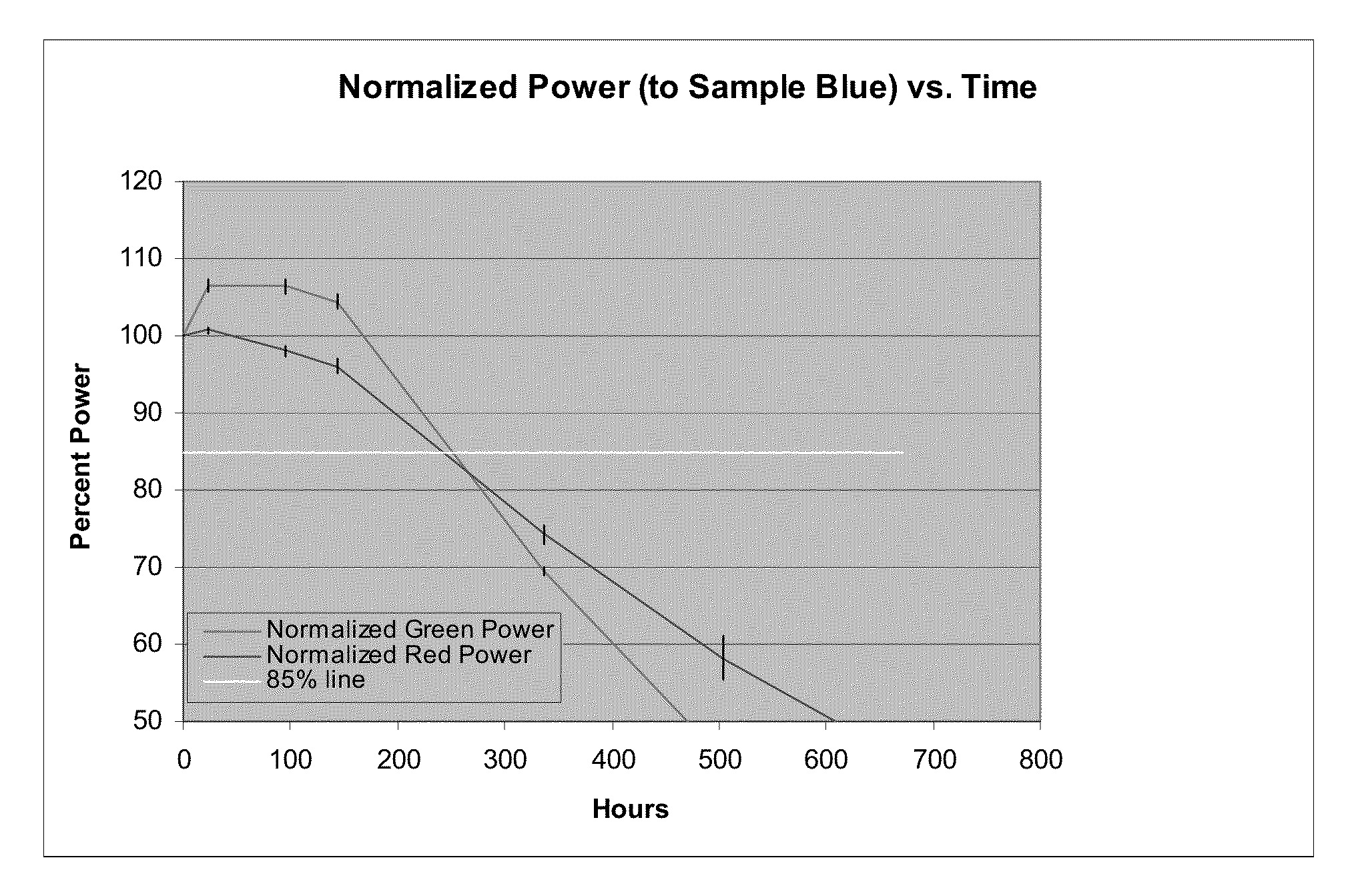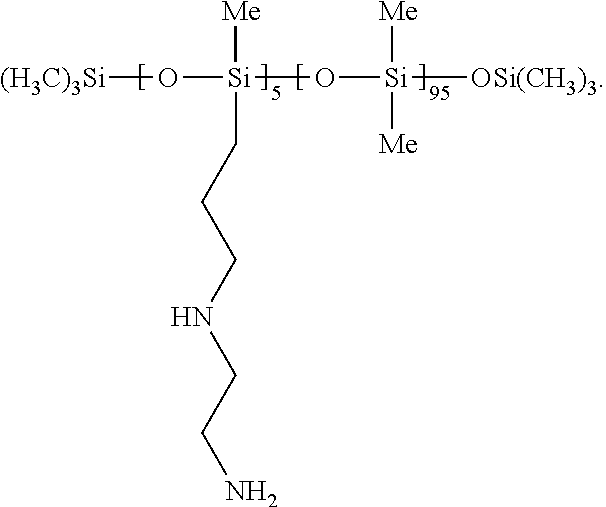Method for solventless quantum dot exchange
a quantum dot exchange and solvent technology, applied in the direction of non-metal conductors, conductors, sustainable buildings, etc., can solve the problems of poor color rendering, poor power efficiency, and number of critical shortfalls
- Summary
- Abstract
- Description
- Claims
- Application Information
AI Technical Summary
Problems solved by technology
Method used
Image
Examples
example 1
GP-988 and Green Nanocrystal Paste
[0073]After the shell synthesis, the toluene nanocrystal solution is washed in 2× volume of ethanol, where the nanocystals precipitate, and settle into a compact cake using a centrifuge. The wash solvent is then decanted off of the wet cake, and the pasty cake is then used in the exchange. For QD synthesis and shelling references, See Alivisatos, A. P., “Semiconductor clusters, nanocrystals, and quantum dots,” Science 271:933 (1996); X. Peng, M. Schlamp, A. Kadavanich, A. P. Alivisatos, “Epitaxial growth of highly luminescent CdSe / CdS Core / Shell nanocrystals with photostability and electronic accessibility,” J. Am. Chem. Soc. 30:7019-7029 (1997); and C. B. Murray, D. J. Norris, M. G. Bawendi, “Synthesis and characterization of nearly monodisperse CdE (E=sulfur, selenium, tellurium) semiconductor nanocrystallites,” J. Am. Chem. Soc. 115:8706 (1993), X. Peng, et al., J. Am. Chem. Soc. 30:7019-7029 (1997).
[0074]1.5 g GP-988 was added to green nanocryst...
example 2
GP-988 and Red Nanocrystal Paste
[0077]2.25 g GP-988 was added to red nanocrystal paste (from 15 mL washed nanocrystal, which was decanted of its wash solvent), stirred well with a spatula, and then a stir bar while heating to 90° C. for 2 hours. The solution was cooled to room temperature and decanted to another vial.
example 3
Preparation of Nanocrystal Film
[0078]A film was made from green concentrate in Example 1 and red concentrate in Example 2 in Epic 91 epoxy. The accelerated reliability test shows similar stability to POR ESH films, specifically, 275 hr lifetime on an accelerated testing platform (lightbox III) which is in the range of standard solvent processed material films
PUM
| Property | Measurement | Unit |
|---|---|---|
| Tg | aaaaa | aaaaa |
| Tg | aaaaa | aaaaa |
| Tg | aaaaa | aaaaa |
Abstract
Description
Claims
Application Information
 Login to View More
Login to View More - R&D
- Intellectual Property
- Life Sciences
- Materials
- Tech Scout
- Unparalleled Data Quality
- Higher Quality Content
- 60% Fewer Hallucinations
Browse by: Latest US Patents, China's latest patents, Technical Efficacy Thesaurus, Application Domain, Technology Topic, Popular Technical Reports.
© 2025 PatSnap. All rights reserved.Legal|Privacy policy|Modern Slavery Act Transparency Statement|Sitemap|About US| Contact US: help@patsnap.com



